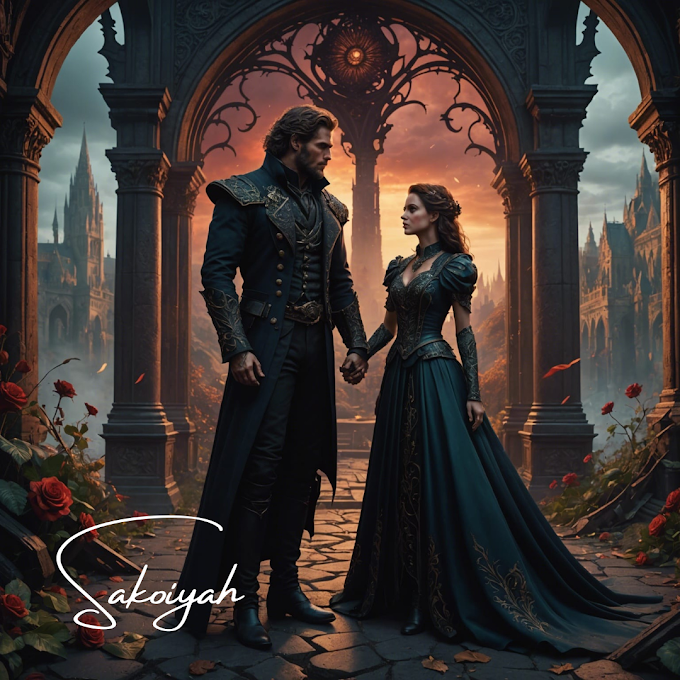The Story Circle, often attributed to writer Dan Harmon, is a narrative structure that can help you plan and develop your story. It's a simplified version of the traditional three-act structure. It can be a valuable tool for writers, especially when outlining their narratives. Here's a step-by-step guide to planning your narrative using the Story Circle:
1. You:
Introduce the protagonist and their everyday life.
In this phase, you establish the protagonist's current
situation, their goals, and the world they inhabit. Show the audience what
their life is like before the central conflict arises. This is an opportunity
to make the audience care about the character.
- Who is
your protagonist?
- What
is their current life like?
- What
are their daily routines and habits?
- What
are their strengths and weaknesses?
- What
is missing or lacking in their life?
2. Need:
Establish what the protagonist wants or needs.
The protagonist should have a clear goal or desire that
drives the story forward. This need could be tangible (like finding a treasure)
or emotional (like gaining self-confidence). This sets up the central conflict
that the protagonist will strive to resolve.
- What
does your protagonist want or need to achieve?
- Why is
this goal important to them?
- How
will achieving this goal fulfill their desires or needs?
- What
is at stake if they fail to achieve their goal?
3. Go:
The protagonist takes action.
The protagonist decides to pursue their goal and takes
action to achieve it. This could involve leaving their ordinary world,
venturing into the unknown, or facing a challenge they haven't encountered
before. This step kicks off the adventure and often introduces them to new
characters, places, or obstacles.
- What
event or catalyst prompts your protagonist to take action?
- How
does the protagonist decide to pursue their goal?
- What
challenges or conflicts arise as they embark on their journey?
- How
does the protagonist's world change as they leave their comfort zone?
4. Search:
The protagonist encounters obstacles and challenges.
As the protagonist works towards their goal, they encounter
various obstacles, conflicts, and setbacks. These challenges test their
determination, skills, and resolve. Each challenge should escalate in
intensity, making it increasingly difficult for the protagonist to achieve
their goal.
- What
obstacles or challenges does the protagonist encounter?
- How do
these challenges test their determination and skills?
- Are
there external antagonistic forces or internal conflicts they must face?
- How do
these obstacles escalate in intensity as the story progresses?
5. Find:
The protagonist makes progress.
After facing multiple challenges, the protagonist makes some
progress towards their goal. They learn, adapt, and grow, gaining new insights
and skills. This step should provide a sense of accomplishment and keep the
audience engaged in the story's development.
- What
progress does the protagonist make in overcoming challenges?
- How do
they learn, adapt, and grow along the way?
- Are
there allies or mentors who aid them in their journey?
- What
new information or skills do they acquire?
6. Take:
The protagonist faces their ultimate challenge.
The protagonist confronts their main obstacle or antagonist.
This could be the most significant challenge, requiring them to utilize
everything they've learned and overcome internal conflicts. The outcome of this
confrontation will determine whether they achieve their goal.
- What
is the ultimate challenge or confrontation your protagonist faces?
- Who or
what is their main obstacle or antagonist?
- How
does the protagonist use what they've learned to confront this challenge?
- What
is the emotional and physical toll on the protagonist during this climax?
7. Return:
The aftermath of the final challenge.
Following the climax, the protagonist deals with the
consequences of their actions. They reflect on their journey, and there might
be a moment of resolution for their internal conflicts. This step helps to wrap
up loose ends and provides closure to the narrative.
- What
is the aftermath of the climax?
- How has
the protagonist's world changed as a result of their actions?
- Are
there any loose ends or unresolved conflicts that need to be addressed?
- How do
the protagonist's relationships evolve after the climax?
8. Change:
Show how the protagonist has transformed.
The protagonist should undergo change or transformation due
to their journey. This change could be emotional, psychological, or even
physical. The audience should be able to see the growth the protagonist has
experienced throughout the story.
- How
has the protagonist changed or evolved throughout the story?
- What
lessons have they learned from their journey?
- How
have their beliefs, values, or outlook on life shifted?
- What
internal conflicts have they resolved?
9. Outcome: The resolution of the story.
Conclude the story by showing how the protagonist's actions
have impacted their world and the lives of those around them. This could
involve showing the direct results of their actions or demonstrating the
broader consequences of their journey.
- What
is the ultimate result of the protagonist's actions?
- How do
the events that transpired affect the world around them?
- Are
there any lingering consequences or new opportunities?
- How
does the story come to a satisfying conclusion for both the protagonist
and the audience?
Conclusion
Using the Story Circle as a guide can help you create a
coherent and engaging narrative structure. Remember that while the Story Circle
provides a helpful framework, adapting it to your specific story and characters
is essential to create a unique and compelling narrative.




.png)

.png)




0 Comments